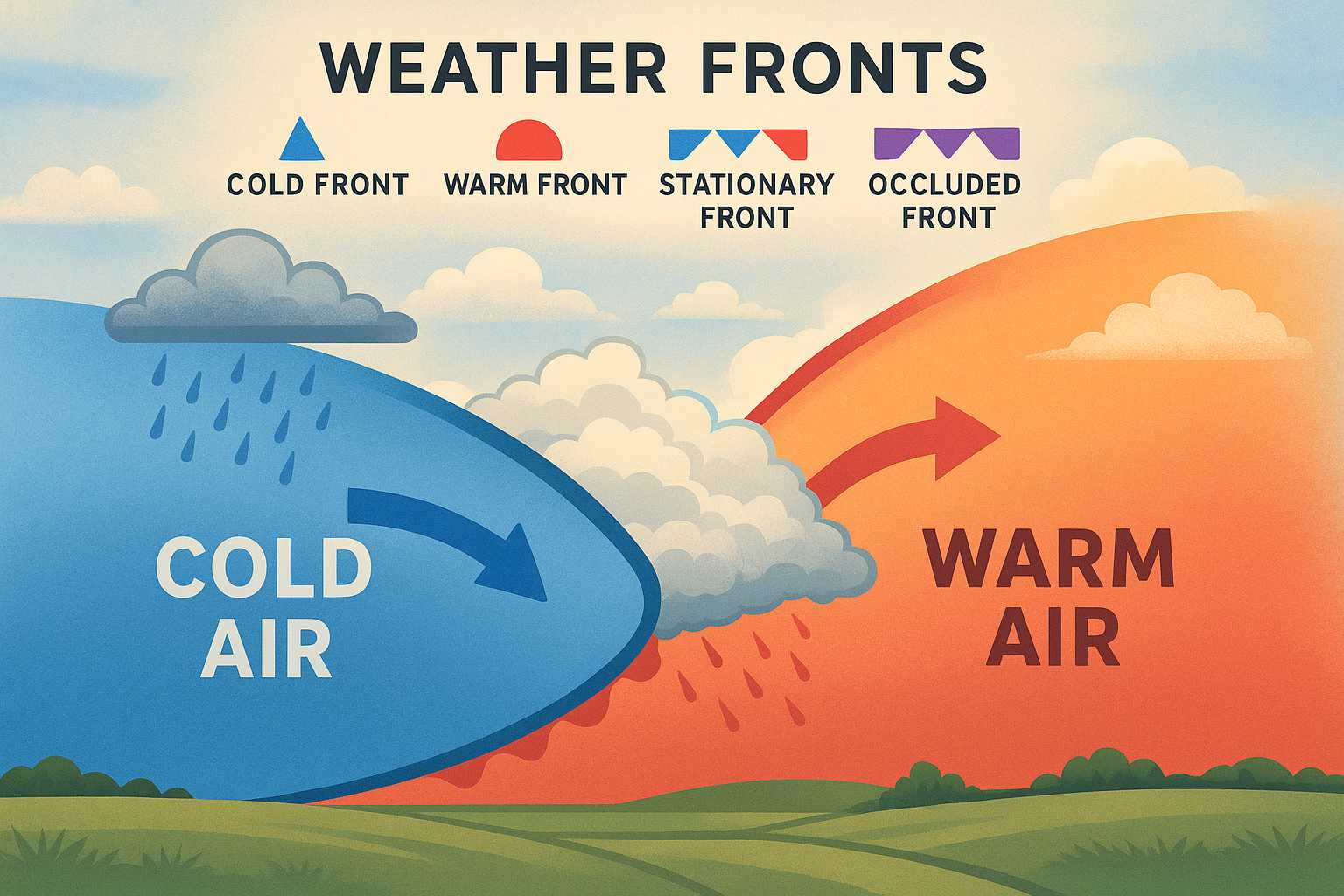When we watch a weather forecast, terms like "cold front" and "warm front" are often mentioned, but what do they really mean? As a meteorologist passionate about weather theory, I find weather fronts to be one of the most fascinating—and sometimes misunderstood—parts of our daily atmosphere. In this article, we’ll explore what weather fronts are, how they form, and why they play such a pivotal role in shaping our local weather patterns.
What Is a Weather Front?
A weather front is a boundary separating two air masses with distinctly different temperatures and humidity levels. Think of it as an invisible line drawn across the sky, with cold air on one side and warm air on the other. When these air masses meet, their differences can lead to a variety of weather, from gentle showers to intense storms.
Types of Weather Fronts
There are four main types of fronts:
- Cold Front: This occurs when a cold air mass moves into a region of warmer air. Cold fronts usually move quickly and can lead to sudden drops in temperature, strong winds, and sometimes dramatic thunderstorms.
- Warm Front: Here, warm air advances over cold air. Warm fronts tend to move more slowly, often bringing widespread, steady rain or drizzle before the air turns warmer.
- Stationary Front: Sometimes, neither air mass is strong enough to push the other, resulting in a front that barely moves. This can lead to several days of persistent clouds and precipitation.
- Occluded Front: This happens when a cold front catches up to a warm front, lifting the warm air completely off the ground. Occluded fronts often lead to complex weather patterns, including varying precipitation and temperature shifts.
Why Do Fronts Matter?
Fronts are catalysts for change in our atmosphere. They help explain why the weather can shift suddenly, and why regions experience everything from tranquil rain to severe storms. When a front passes through, rising and sinking air sets the stage for clouds, precipitation, and even thunder or lightning. Understanding how fronts work can help us better predict—and prepare for—the shifts in weather that affect our daily lives.
Next time you hear about a front approaching, you’ll know that it’s more than just a line on a map. It’s a dynamic boundary between air masses, driving much of the action in Earth’s ever-changing sky.
Stay tuned for more explorations of weather science!
— Rabir


Leave a Reply to Lex Cancel reply